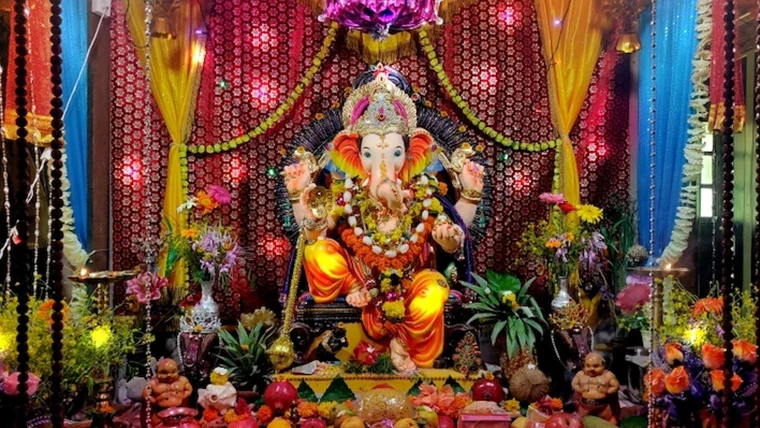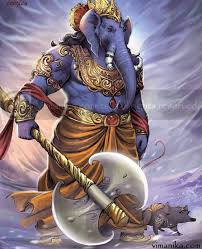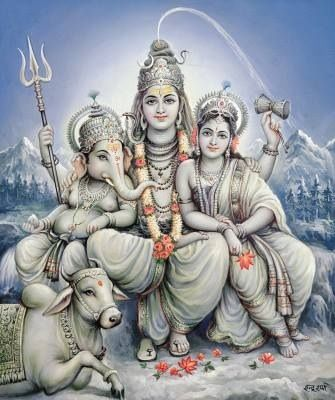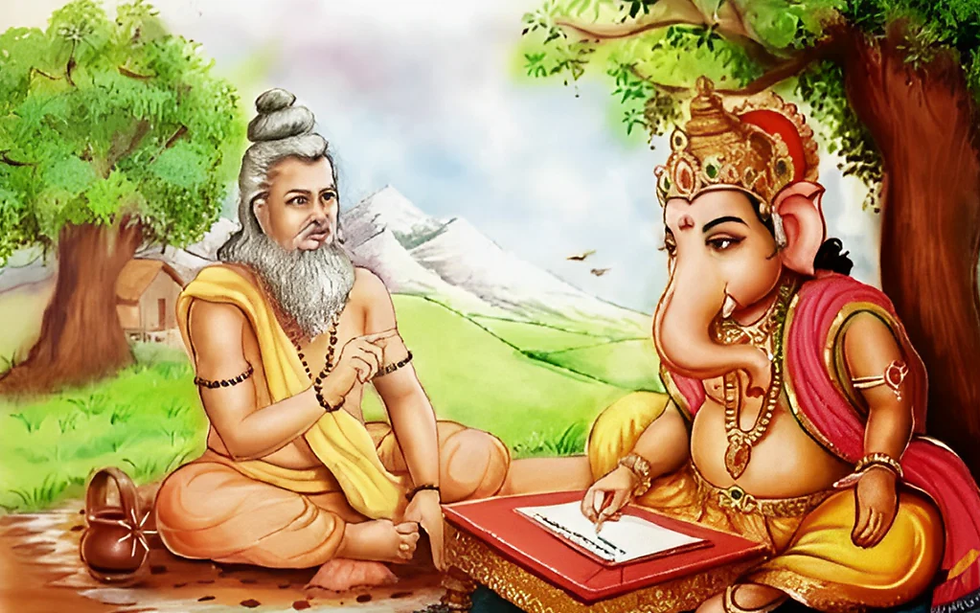Incarnations of Lord Ganesha: Ashtavinayaka Avatars and the Sanatan Path to Conquer Ego & Desires
- Chinmayi Devi Dasi

- Aug 27
- 5 min read
The Incarnations of Lord Ganesha aren’t just stories, they’re life lessons. Each one shows us how to face challenges within ourselves—with courage, wisdom, and devotion

Lord Ganesha is the first name we remember before any new beginning. In Sanatan Dharma, he is Vighnaharta—the remover of obstacles—and Buddhiprada—the giver of wisdom. His stories are not just mythology; they are maps for inner growth.
Ganesh Chaturthi is one of the most loved festivals in India. It begins with the arrival of Lord Ganesha into our homes and ends with his visarjan (immersion) on Anant Chaturdashi.
In 2025, the festival runs from August 27 (11:05 AM) to September 6 (Visarjan)—but the deeper calendar is inside: it is the time it takes to re-shape habits with devotion.
Historical Roots of the Ganesh Chaturthi Celebration
The tradition of celebrating Ganesh Chaturthi for ten days goes back to the times of Chhatrapati Shivaji Maharaj, who encouraged the festival to unite people in devotion.
Later in 1893, freedom fighter Lokmanya Bal Gangadhar Tilak revived the 10-day public celebration during British rule. He made it a community festival so that people could come together, strengthen unity, and express patriotism under the umbrella of devotion.
Thus, what began as royal tradition became a movement of people’s strength and faith.
The Spiritual Cycle of 10 Days
From Ganesh Chaturthi to Anant Chaturdashi, we welcome Lord Ganesha into our homes just like a family member. Each day we do aartis, prayers, chanting, and seva. These 10 days are not just rituals but a complete spiritual practice.
Arrival (Prāṇa-Pratiṣṭhā) – Inviting Ganesha into our lives.
Presence (Daily Worship) – Living with him, learning devotion, love, and discipline.
Letting Go (Visarjan) – Saying goodbye with joy and surrender, learning vairāgya (detachment).
The ten days symbolize a step-by-step purification of our inner self—dropping pride, anger, jealousy, greed, and ego, one by one.
On the final day, called Anant Chaturdashi, idols are taken out in grand processions with music and dance before being immersed in water. This marks Lord Ganesha’s return to Mount Kailash, reminding everyone that while happiness is celebrated, life also teaches detachment.

“गणानां त्वा गणपतिं हवामहे”
“We invoke You, O Ganapati, leader of all beings.” — Rig Veda 2.23.1
Sanatan wisdom sees Ganesha not only as a deity to be worshipped, but as consciousness that removes ignorance. When we bow to him, we are really bowing to clarity, humility, and right action. His form is symbolic: the elephant head for intelligence and memory, the big ears to listen more than we speak, the curved trunk for adaptability, and the modaka for the sweetness that comes after discipline.
“वक्रतुंड महाकाय सूर्यकोटि समप्रभ।
निर्विघ्नं कुरु मे देव सर्वकार्येषु सर्वदा॥”

The Eight Incarnations Lord Ganesha: That Conquer Inner Demons
“O curved-trunk, mighty-bodied Lord whose brilliance equals a million suns, remove my obstacles always.”
The Mudgala Purana describes eight chief incarnations of Ganesha. Each avatar faces a demon that represents a human weakness, teaching us how to master it.
Vakratunda (Riding a Lion) — Matsarasura (Jealousy)
Jealousy distorts our vision. Vakratunda’s lion-like courage shows that self-worth ends comparison and envy.
Ekadanta (One-Tusked, Riding a Mouse) — Madasura (Pride/Arrogance)
The broken tusk reminds us: let go of ego to hold wisdom. True strength is quiet and teachable.
Mahodara (Great-Bellied) — Mohasura (Delusion), Durbuddhi (Evil Thought), Jñānāri (Enemy of Wisdom)
Mahodara contains chaos without reacting. He captures delusion and destroys toxic thinking—clarity over confusion.
Gajānana (Elephant-Faced) — Lobhasura (Greed)
Greed shrinks the heart. Gajānana’s vastness teaches contentment and the joy of enough.
Lambodara (Plentiful-Bellied) — Krodhasura (Anger), Mayakar
He cools the fire of rage and illusion. The lesson: respond, don’t react.
Vikata (Riding a Peacock) — Kāmasura (Unbridled Desire)
Desire is endless; discipline gives it direction. Vikata shows joy without addiction.
Vighnarāja (On Sheshanāga) — Mamtāsura (Possessive Attachment)
Attachment tightens the fist; devotion opens the palm. Vighnarāja removes blocks born from clinging.
Dhoomrāvarṇa (Smoky-Hued) — Ahamkārasura (Ego)
The last and toughest battle is with ego. Dhoomrāvarṇa dissolves the smoky veil of “I, me, mine,” revealing true Self.
In Sanatan thinking, these demons are not “out there.” They live inside us. Each avatar is a practice—a way to purify thought, speech, and action until wisdom becomes natural.
“एकदन्ताय विद्महे वक्रतुण्डाय धीमहि” — The Sindhurasura Story
“We know the One-Tusked Lord; we meditate on the Curved-Trunk One. May that Dantī inspire our intellect.” — Ganapati Gāyatrī

A beloved tale tells of Sindhurasura, a powerful demon whose force grew with every drop of his blood. Standard weapons failed; violence only made him stronger. Ganesha taught a deeper method: wisdom over brute force. Manifesting immense form and perfect strategy, he defeated Sindhurasura and restored balance. Many traditions connect this victory with Mayūreśvara at Morgaon, showing how Ganesha’s compassion and intelligence end cycles of harm. The message: when aggression feeds aggression, change the approach—use insight.
“शरणं भव गणाधिप”
“O Lord of Hosts, be our refuge.”

The Ideal Son: Ganesha’s Teachings on Parents (Pitṛ-Bhakti)
The famous story of the divine fruit shows Ganesha’s heart. When asked to circle the world, Kartikeya sped away on his peacock. Ganesha quietly circled his parents, Shiva and Parvati, saying, “My parents are my world.” He won—not by speed, but by understanding.
Lesson for children:
Honor parents with empathy and service.
Think, don’t just compete. Wisdom often beats impulsive action.
Be obedient not out of fear, but from love and respect.

Guru-Bhakti and Learning: The Mahābhārata Scribe
When Vyasa needed a scribe for the Mahābhārata, Ganesha agreed—with a condition: Vyasa must recite without pause. Vyasa posed a return condition: Ganesha must understand every verse before writing it. When the stylus broke, Ganesha broke his tusk and continued—choosing knowledge over appearance.
Understand deeply; don’t just take notes—grasp meaning.
Sacrifice comfort for higher learning (even a tusk, if needed!).
The best students are humble, patient, and consistent.

Friendship & Compassion: Ganesha and Mushika
Ganesha’s vāhana is a mouse (Mushika)—small, overlooked, often dismissed. By choosing Mushika, Ganesha teaches: no friend is “too small,” no role is “too humble.” True leadership lifts others, adapts to their pace, and makes room for every being.
Family, Devotees, and Dharma: Relationships that Shape the Soul
With His Mother (Parvati): Ganesha embodies care and protection, reminding us to keep shraddhā (faith) and sneha (tenderness) alive at home.
With His Father (Shiva): He mirrors detachment with responsibility: do your duty, but don’t cling to results.
With His Consorts (Siddhi & Buddhi): He shows that success (Siddhi) is empty without intelligence (Buddhi)—keep both balanced.
With the Community: Ganesh Utsav turns streets into satsang—art, music, and seva become worship in action.
“सिद्धि-बुद्धि-प्रदाते नमः”
“Salutations to the giver of accomplishment and wisdom.”

What We Can Practice Daily
Begin with Ganesha: A short japa—“ॐ गं गणपतये नमः”—before work or study.
Listen like an elephant: Let your ears be larger than your tongue—listen more.
One sweet daily: Earn your modaka—do a small hard thing every day (study, exercise, help someone).
Let go at sunset: Practice a tiny visarjan—release one worry, one grudge, or one ego-claim before sleep.
“अनन्ते शरणं त्वम्” — The Heart of Visarjan
“In the Infinite, we take refuge.”
On Anant Chaturdashi, we immerse the idol. Clay returns to water, form returns to formless. The message for every home is profound: Love fully. Serve fully. Then let go. The Lord you immerse outside must now rise inside—as patience, humility, and clear action.

Ganesha stands at every doorway of life: study, marriage, work, travel, healing. His eight incarnations show us how to win the only war that matters—the inner one. His story with Sindhurasura proves that wisdom outsmarts violence. His festival teaches devotion without attachment. His life with parents, gurus, and friends teaches relationship as a spiritual path.
Let us begin today:
गणपति बाप्पा मोरया, मंगलमूर्ति मोरया!



Comments